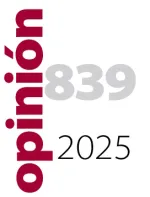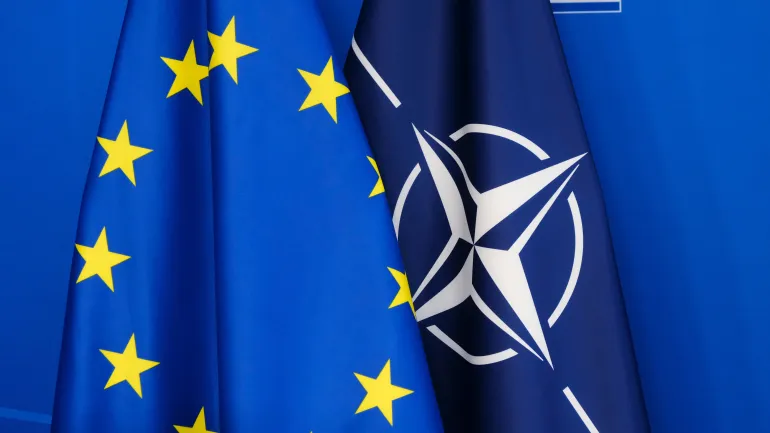What the US military disengagement means for the European security?


The message from the Trump administration is increasingly clear: America is reprioritizing its global commitments and Europe needs to be prepared for the US plans to scale back its military presence on the continent. After decades of providing security guarantees for Europe, the recent announcement of the US plans to reduce its troops has reignited debates not only about the European security but also about Europe’s nuclear deterrence. Trump’s unfriendly rhetoric towards European allies, including lack of willingness to come to their defense if needed, put NATO’s pact into serious question and test the core promise of collective defense.
The Permanent Representative of the U.S. to NATO Matthew Withaker announced on May 16 that Washington will begin consultations with European allies on reducing American troops. Speaking at the security conference in Estonia, he emphasized that the process would unfold after the NATO summit in the Hague this June. Following Russia’s 2022 invasion of Ukraine, the U.S. deployed or extended about 20,000 additional armed forces to Europe. As of December 2024, the U.S. force posture in Europe, including permanently stationed forces, totaled approximately 80,000 military personnel. This includes rotational deployment of up to two Brigade Combat Teams in Central and Eastern Europe and about 10,000 troops to Poland, including 800 soldiers deployed to a U.S.-led NATO battlegroup. The increased U.S. military presence is part of an enhanced NATO defense and deterrence posture in the eastern part of the alliance. Allied troops deployed to the region for the first time in NATO’s history after Russia’s 2014 invasion of Ukraine.
Despite Withaker’s efforts to reassure European partners that any troops changes will be carefully coordinated to avoid a security gaps, his remarks raised concerns in Europe regarding the U.S. commitments to NATO. Yet, these concerns are not new. U.S. Defense Secretary Pete Hegseth told NATO allies in February that “stark strategic realities prevent the United States of America from being primarily focused on security in Europe”. Such comments, along with Trump’s threats not to protect members of NATO that spend too little on defense and his reluctance to keep supporting Ukraine’s fight against Russia, fueled European fears about the U.S. long-term commitments to the transatlantic alliance and reignited debates about Europe’s nuclear deterrence.
With the Trump administration’s hostile rhetoric towards Europe and the U.S. reliability increasingly in question, Europeans started to worry that Washington might even go as far as withdrawing the nuclear weapons stationed in the European countries. These weapons are deployed at bases in several countries (Belgium, Germany, Italy, the Netherlands, and Turkey) as part of a nuclear sharing agreement with NATO allies. It is estimated that there are from 100 to 480 B-61 gravity bombs deployed in Europe. The U.S. has not so far suggested withdrawing its nuclear weapons from Europe, however, President Trump’s comments suggesting his lack of resolve to support European allies in a crisis put the US deterrence in question.
Concerns about the strength of the European deterrent are understandable in the context of the threat of nuclear weapons resurging in a manner not seen since the height of the Cold War. However, the solutions that have been proposed so far by some of the European leaders do not seem to be pragmatic.
On March 5, President Macron announced that France would be opening a strategic dialogue on whether and how to extend its nuclear deterrence to help protect other European countries. Macron’s declaration was made in response to Fredrich Merz, the German Chancelor’s proposal that France and the UK together could provide extended deterrence guarantees to Europe, but Merz also warned that European weapons could only be a supplement to the existing American arrangements.
It is important to emphasize that France and the UK’s nuclear arsenals are different to the US one in terms of size and launch platforms. France has air-launched and submarine-launched while the UK has only submarine-launched nuclear weapons. Besides, British nuclear arsenal is heavily reliant on US technology. Instead, French nuclear arsenal, estimated to be around 290 warheads, is completely independent from the US. France can produce all the components domestically. While a nuclear arsenal of 290 warheads is a sizable threat, it’s dwarfed by American and Russian arsenals which are roughly 20 times larger than the French one. The UK has even fewer nuclear weapons, but it already provides an extended deterrence guarantee to other NATO members by being a member of the NATO Nuclear Planning Group (NPG). The UK have designated its nuclear weapons to protect Europe. By contrast, France is not a member of the NPG, and its nuclear doctrine is designed to protect its own territory only. Relocating French nuclear weapons and aircrafts to other countries would not be sufficient to provide a nuclear umbrella. The European allies would have to solve the problem of strategic coordination and decision making in a crisis.
At the heart of this issue there is a basic question of who ultimately guarantees the European security: NATO or the European Union? NATO is a military alliance build around the US leadership, the EU is mostly a political and economic arrangement with limited military capabilities. Without joining NATO’s NPG, Macron’s nuclear proposal challenges the traditional division and forces Europe to confront an uncomfortable question: If the US pulls back can the EU step up? France long championed the idea of Europe’s strategic autonomy: the idea that Europe should develop its own defense capabilities independent of the U.S. Extending its nuclear umbrella fits into this vision. But it also clashes with the preferences of other countries like Germany which historically preferred to keep NATO and the U.S. at the heart of European security. Macron’s offer raises also other important questions about deterrence and credibility for NATO and the EU, and broader interrogations about European security. Whether this is a step towards a more autonomous Europe or just a response to Trump’s uncertainty remains to be seen. Is France’s nuclear umbrella something that Europe needs, or just a diplomatic gesture?
Some analysts believe that the most pragmatic step to strengthen European deterrence would be for France to join NATO’s NPG and to commit French nuclear weapons to the alliance’s collective deterrence. This would potentially allow Europe to play a more integral role in shaping nuclear policy while reinforcing the credibility of NATO deterrence posture.
However, Russia is nor sitting on the sidelines; Putin called Macron’s proposal extremely confrontational, accusing France of raising the risk of a nuclear war. In the context of ongoing war in Ukraine, escalating tensions in the Baltic Sea, and potential reductions of the American troops in Europe, NATO members should focus on strengthening existing structures and investing in the conventional forces that remain essential to deterrence and defense. Rather than pursuing costly, destabilizing nuclear ambitions, a more pragmatic move for the European leaders would be to invest in conventional military capabilities, particularly long-range strike systems and air defense. A collective investment in this kind of capabilities would ensure a more resilient deterrence posture for the continent in the future.
Keywords: US, EU, NATO, European security, deterrence, nuclear, defense, Russia, France, Trump, Ukraine, capabilities
All the publications express the opinions of their individual authors and do not necessarily reflect the views of CIDOB or its donors